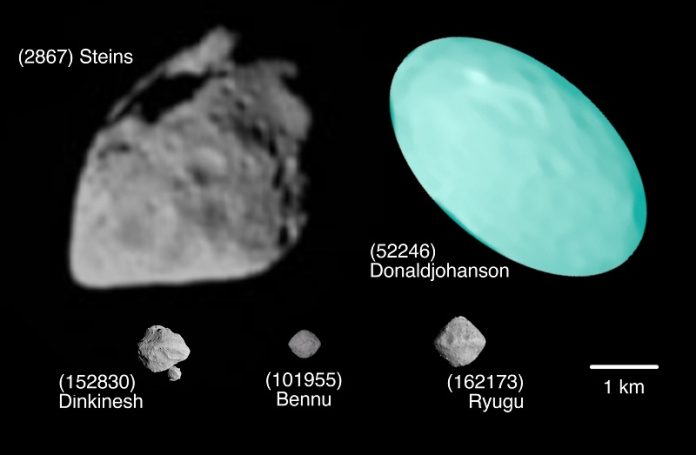
New research suggests that the asteroid (52246) Donaldjohanson formed about 150 million years ago when a much larger asteroid broke apart.
Since then, its orbit and spin have changed significantly. This discovery comes from a study led by the Southwest Research Institute (SwRI), and it could help scientists understand how asteroids evolve over time.
On April 20, 2025, NASA’s Lucy spacecraft will fly by Donaldjohanson, a small asteroid about three miles wide.
The mission will collect data that could provide new insights into how asteroids form and change.
Scientists are excited about this close encounter, as Donaldjohanson appears to be a peculiar object.
“From observations made on Earth, we can see that Donaldjohanson has unusual characteristics,” said Dr. Simone Marchi, the deputy principal investigator of the Lucy mission and lead author of a recent paper published in The Planetary Science Journal.
Understanding how this asteroid formed might help explain its strange features. According to the research, Donaldjohanson is likely part of the Erigone asteroid family—a group of space rocks that share similar orbits.
This family was created when a large asteroid broke apart in the inner part of the asteroid belt, near the region where NASA’s OSIRIS-REx and JAXA’s Hayabusa2 missions recently explored the asteroids Bennu and Ryugu.
Donaldjohanson is expected to be quite elongated and rotates slowly. Scientists think this slow rotation could be due to thermal forces that have gradually changed its spin over time. Studying its shape and surface will help researchers confirm this theory.
“We are eagerly awaiting the flyby because Donaldjohanson seems very different from Bennu and Ryugu,” Marchi said. “But we might find surprising connections.”
The asteroid is named after Dr. Donald Johanson, the paleontologist who discovered the famous Lucy fossil in Ethiopia in 1974. This fossil was key to understanding human evolution, just as NASA’s Lucy mission aims to uncover the history of the solar system.
Interestingly, Donaldjohanson is the only asteroid with a living namesake at the time of its space mission.
Lucy’s journey is ambitious—it will visit 11 asteroids over 12 years, primarily focusing on the Trojan asteroids that orbit near Jupiter. SwRI’s Dr. Hal Levison, the mission’s principal investigator, highlighted the importance of these encounters.
“By studying main belt asteroids like Donaldjohanson, we not only learn more about them but also test Lucy’s advanced navigation system before the mission’s main goal: studying Jupiter’s Trojans,” Levison explained.
These asteroids are considered “fossils” of the early solar system, holding valuable clues about how planets formed. With Lucy’s help, scientists hope to piece together more of the puzzle of our cosmic history.



